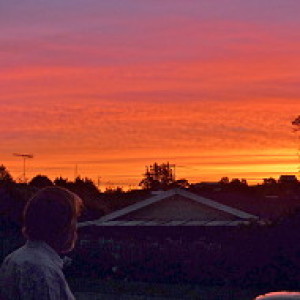Before the dog arrived
Woke early enough to run to Whisper Cove at the northern end of Snells Beach in search of kuaka (Bar-Tailed Godwit). I saw two at a distance a week or so ago. Yesterday morning, tsuken spotted a large group at Whisper Cove. He decided to come with me.
On the way there I was able to record a number of scenes which appealed. Some I will put in blipfolio. At Whisper Cove there were more than 50 kuaka in a group at the edge of the water, waiting for the tide to come in further and stimulate emergence of what they feed on (marine worms, crustaceans, and molluscs). taking photographs as I walked closer and found the right angle for the morning sun shining onto them. This was the final photograph.
I then started to walk further away in order to get a photo of the entire group. At that moment a large black labrador cam rushing across the sand barking furiously and by the time I had turned around they were all gone.
Later this morning we prepared a grand picnic and headed to Scotts Landing for swim, play and food. Foolishly forgot the eggs and sausages (essential picnic food for small and old) and had to go back and get them. That was a performance in and of itself. Jesafly went first, but had no key to the house! Then I went as she was on her way back. There is limited parking at Scotts Landing, so I was anticipating a long walk from up the hill. However, we both parked in the same two car parks we had before. They had been used and vacated. Just for us?
Now back at the beach house where S (despite struggling with the start of a migraine) has put on the casserole, which Jesafly and I are trying not to ruin.
LATER:
We didn't ruin it; in my opinion because it was so well begun. The children are off to bed with their father reading another excerpt from The Hobbit. Granny will be asked for a song or four, and the day will then quietly wind down.
Info about the kuaka.
Described in my book as an abundant Arctic migrant, the Bar-Tailed Godwit is the commonest migrant wader. Most come from Siberia, with fewer originating in Alaska. It is said that "their numbers in NZ exceed 100,000 distributed in harbours and on sheltered coasts". They are seen along the tide line. They move from place to place in flocks, flying at great speed and often in circling or zig-zagging patterns. They head north in late March or early April. Apparently about 10,000 young birds remain in NZ over the winter.
Blipfolio Posts:
The promontory on the far side of which is our beach house
Another runner on a beautiful morning
Interlopers

Comments
Sign in or get an account to comment.


